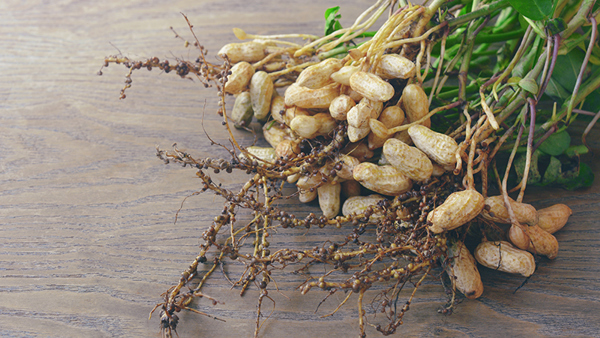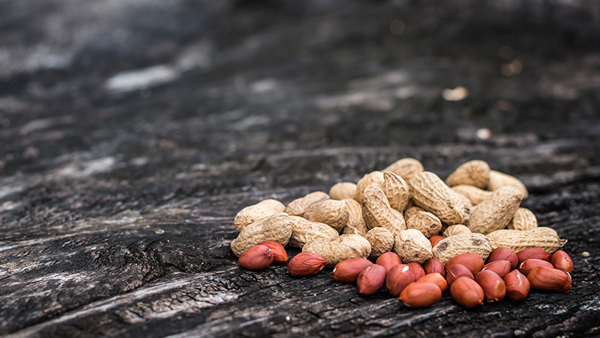Yates Account
Join now
Create a Yates account today!
Sign up to join the Yates Garden Club for monthly e-mails packed with seasonal inspiration, tips for success & exclusive promotions.
Plus if you’re a Garden Club member you can take part in the Yates Growing Community - a blog to share successes, get advice & win prizes in fun challenges along the way!

Forgot password
Enter the email address associated with your account, and we'll email you a new password.

As natives of Brazil, they need a warm climate, so will grow best in tropical, subtropical and warm-temperate areas. They can take up to 5 months to mature, so will you need a little patience before you can dig up your buried treasure!
How to grow Peanuts in a garden
- Choose a sunny spot with well drained soil. Enrich the soil with Yates Dynamic Lifter Organic Plant Food. If the soil is clay based, improve soil structure by adding gypsum and forking in well.
- Using a trowel, dig a 5cm deep furrow and plant seeds (just raw peanuts with the skin on), spacing them 10-15cm apart. If sowing more than one row, allow 60-75cm between rows. Cover the seeds with soil and gently firm down with the back of a rake.
- Water seeds in well and apply an organic mulch such as pea straw or lucerne to help retain soil moisture. TIP: If the soil is well-watered, no extra watering is required until the seedlings emerge after 7-10 days.
- Water the plants regularly and deeply at least once a week or more, especially in hot and dry weather.
- As the plants grow, hill or mound the soil slightly against the plants for support. This will also help increase peanut production.
- Feed regularly with Yates Thrive Natural Vegie & Herb Organic Based Pelletised Plant Food. TIP: for an added boost, apply Yates Thrive Vegie & Herb Liquid Plant Food.
- When the foliage turns yellow and plants start to die down, it’s time to harvest! Dig up the whole plant with a fork, gently shake off excess dirt and hang upside down to dry in the sun for 3-4 days or until most of the moisture has evaporated. Strip off the pods and store in air tight containers or remove the shell and eat raw.


How to grow Peanuts in a pot
- Choose a pot at least 500mm wide and 300mm deep. Position in full sun and protect from strong winds.
- Fill starter trays with Yates Black Magic Seed Raising Mix. Sow seeds over mix, lightly cover and gently water. Keep the soil moist throughout germination.
- Once seedlings reach 10cm tall, fill chosen pots with quality potting mix, such as Yates Premium Potting Mix. Transplant a couple of seedlings into the pot and water in well with Yates Thrive Vegie & Herb Liquid Plant Food.
- Mulch with an organic mulch like pea straw or woodchip.
- Water the plants regularly and deeply at least once a week or more, especially in hot and dry weather. Ensure the soil is slightly moist between waterings and not wet, otherwise they will rot with wet feet.
- Feed fortnightly with Yates Thrive Vegie & Herb Liquid Plant Food.
- As the plant grows, hill or mound potting mix around the base of the plant. Alternatively, use organic mulch. This will help support the plant and increase peanut production.
- When the plant dies down, it’s ready for harvest. Use a hand fork or trowel to dig around the plant and remove it from the pot. Shake of excess soil and hang upside down to dry in the sun for 3-4 days or until most of the moisture has evaporated. Strip off the pods and store in air tight containers or remove the shell and eat raw.
Growing tips
-
You can use raw peanuts bought from health food or grocery stores for planting. Remove the shell just before planting, but ensure the skin is still intact.
- When the flowers die, you’ll notice they will develop a long ‘peg’, which causes the plant to bend towards the soil and push below the surface. The tip of the peg enlarges and eventually develops into the peanut. Fascinating to watch!
- There are three main types of peanuts that you can grow – 'Runner', 'Spanish' and 'Viriginia'.
















Share
Share this article on social media